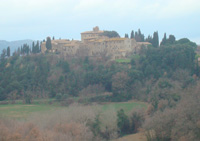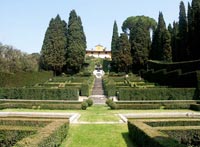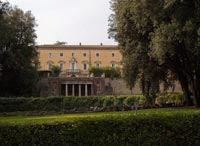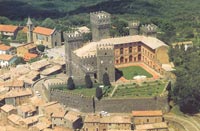Villa Certano Baldassarrini |
| The Villa Certano estate extends along the sunny, open hillside about 7 kilometres from Siena. Inside the estate, on top of a hill, is the ancient rural village with its stately manor-house dominating the tufaceous, sandy, browny-yellow terrain, typical of this area, where olives and grapes have been cultivated for centuries. Villa Certano has belonged to the Baldassarrini Macinelli family for centuries and during the Renaissance it was the property of the famous Sienese painter and architect, Lorenzo di Pietra Vecchietta, who made this his residence. |
|
|
|
||
Villa Certano | Strada di Certano, 18, 53010 Costalpino - Siena
|
Villa Certano is easily reached via the A1 Autostrada del Sole motorway and the Firenze-Siena highway.
|
|
||||
| Podere Santa Pia | Villa I Tatti, near Settignano, outside Florence
|
Podere Santa Pia, view from the garden on the valley below |
||
 |
||||
Villa Saracini |
Castel Porrona, a charming medieval village dating back to the 11th century, between Cinigiano and Castiglioncello Bandini and Podere Santa Pia
|
Castello Torre Alfina |
||








